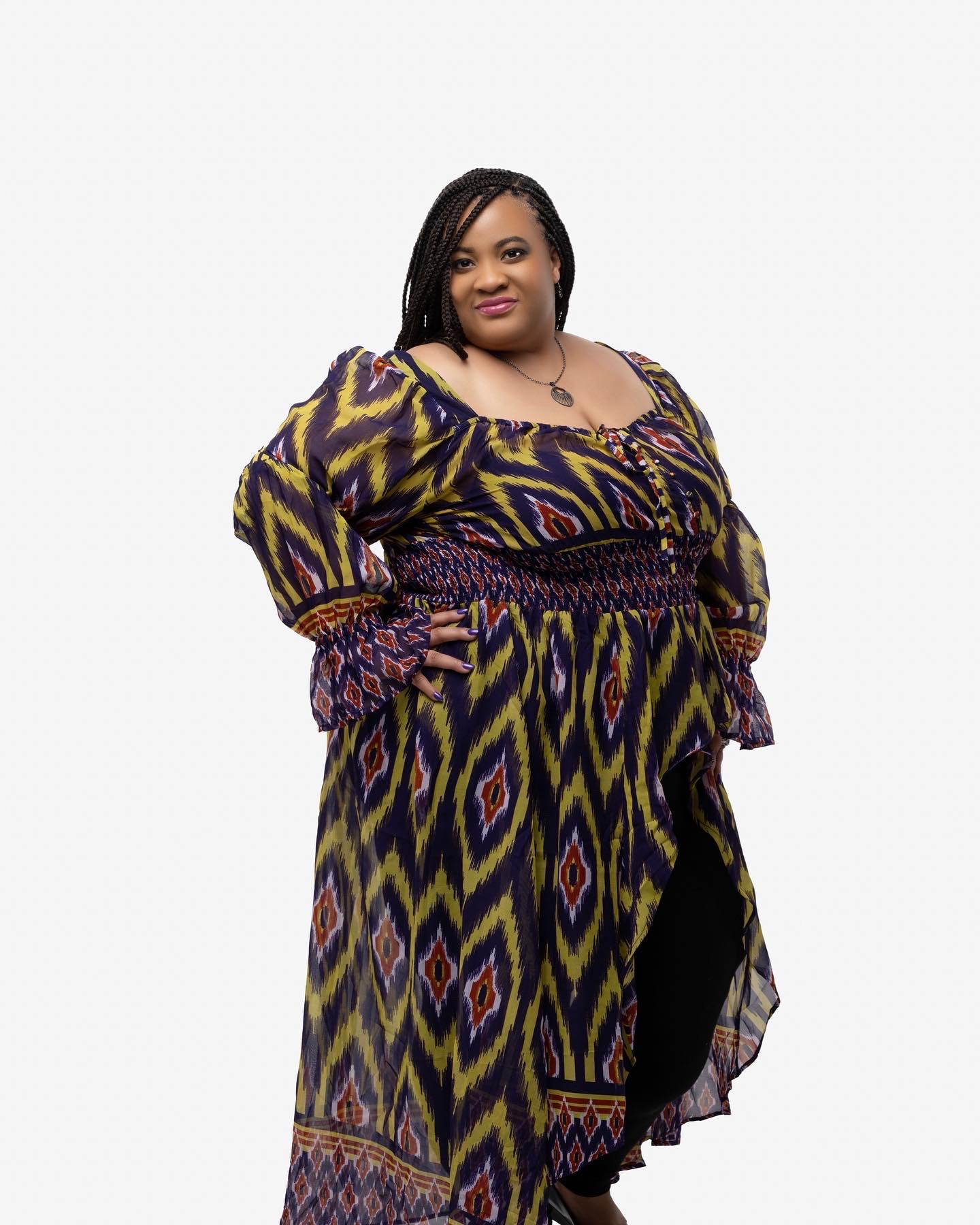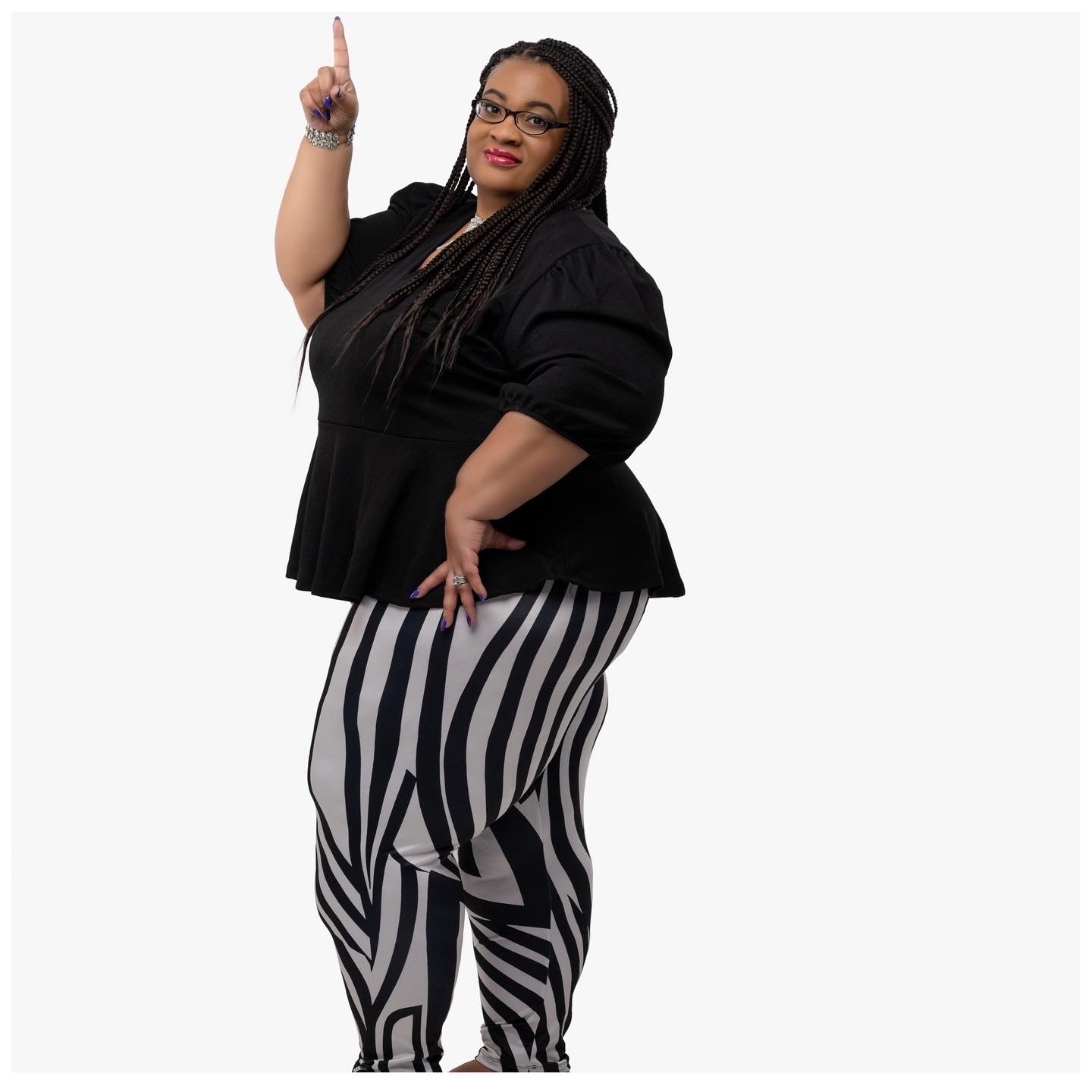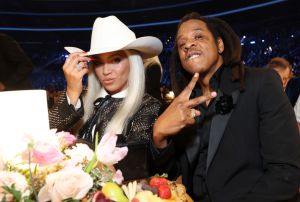October was not just the month of spooky costumes and fall frolicking, it also marked National Domestic Violence Awareness and Prevention Month.
The numbers are staggering. The White House reports that in America, tens of millions of people have experienced intimate partner violence and four in 10 American women and nearly 3 in 10 American men are still impacted by sexual abuse, physical violence, or stalking at some point in their lifetimes.

Source: John Kevin / Getty
With that in mind, Sathya Callender-Wilson has made it her life’s work to share her story and those of people who’ve overcome their trauma despite physical and emotional scars.
Below the nine-year domestic violence survivor and editor of Scars of Survival magazine tells BOSSIP about how witnessing, experiencing and surviving abuse fuels her passion for spreading hope through her nonprofit and her publication.
“I said, ‘God, what is it that you want me to do? What is my purpose?’ And that’s when he showed me, that ‘You were able to survive, heal, and overcome, and now you need to help others do the same.'”

Source: Scars of Survival / SSM
BOSSIP: Tell us about your background, and how that led you to start Scars Of Survival.
My name is Mrs. Wilson. I just got married on January 12, so I’m still a newlywed. I’m originally from Brooklyn, New York, but I stay in Georgia and I’m a mother of five and I have five grandchildren. I’m an overcomer of a nine-year domestic violence relationship that nearly took my life. It was my youngest son’s dad that took me through that whole ordeal.
Growing up as a child, I spent my earlier years with my maternal and paternal grandparents. I was able to go to private school and I was very spoiled. I was the only grandchild on both sides and the only great-niece, so there was a lot of attention was on me. My mother was working and living her life because she was young. She had me at 21, so I didn’t remember her being around a lot when I was that young. When I turned eight years old, she married my sister’s dad who was in the Navy and we relocated to Orlando, Florida and so we lived on the military base. I was the only child, so I had a childhood. I was able to go skating and ride bikes and do all that stuff.
My mother became my at-home mom and an at-home wife so I started experiencing having my mother. She was there all the time, but she was abused. [My sister’s dad] was very abusive. There were times that I would try to fight him off my mother. It was bad, I would hear my mother screaming. So that went on from eight years old until about the age of 12 because I had my oldest son at 14, so I was a teen mom.
So the last experience with him was when my mother moved. We got an apartment and he found out where we were and was saying he was going to kill her. Before he could get to her, I pushed him down the flight of steps and the cops came and arrested him. That was the last time that we witnessed my mother go through that.
After bouncing around from shelters and witnessing traumatic situations like drug use and prostitution, Callender-Wilson says she too experienced abuse like her mom.
The same guy that I ended up allowing back into my life, he abused me. He was on drugs. He was incarcerated when I met him through his cousin because she and I were best friends and that’s how I met him. This guy was 12 years older than me, so I kind of looked at him like a father figure, although he was supposed to have been a boyfriend. But I ended up getting pregnant with my daughter and I was in the shelter the whole time. He ended up getting locked up again. So I dealt with that whole thing for the entire year. When I got my first apartment, I had to pay bills. I was on welfare and had no idea how I would pay my electricity bill. I was just totally lost.

Source: Scars of Survival / SSM
At the age of 18, I didn’t know anything about working and it was just trying but my grandparents did the best they could to help me, I stayed there for a year and after that, my paternal grandmother convinced me to move to North Carolina. I moved to Fayetteville and I thought my mother was going to help me, but she had gotten married again and he wasn’t very supportive of her being supportive of me. So here I am in a nice house. I have my Section Eight still, no car, trying to get to work. By this time I had three children and I’m struggling to to get to work. It was a struggle for me. It was really, really, really, really hard. I was depending on the taxi cab and they would come late. I ended up losing one of my jobs because I was always late waiting for taxis.
I had a social worker, her name was Ms. Rodriguez. I’ll never forget her. When I was on public assistance, she called me into the office one day and she said, “We want you to get your driver’s license.” And I said, “Well, I don’t have a car.” And she said, “Don’t worry about it, get your driver’s license.” And so I said, “Okay.”
Callender-Wilson was gifted a car via Operation Blessings and landed a job and that’s when things started to change; that is until her ex came back into her life under the guise of “being a new man.”
After enduring abuse including physical, sexual, and financial, the publisher remembers a moment when things came to a head and she knew she had to get out.
What was your breaking point?
The day he almost took my life. He was strangling me, and I actually felt myself going. I could see fire in his eyes and it was like the devil was coming. My children were upstairs, I couldn’t get the words out. I couldn’t even scream. And I know, it had to be God that kept me because if it wasn’t for God, I wouldn’t even be here today. It had to be nobody but God that caused him to release his hands from my throat because I couldn’t even scream for my children. [Eventually] itwas my children who got me to my breaking point after I learned that they started sleeping with knives underneath their pillows, and were planning on doing something to him [in retaliation for me]. I knew I didn’t want my children to experience getting in trouble over my decisions.
The New York native eventually moved to Georgia and married a friend who helped her get out of her abusive relationship. After that marriage unfortunately ended, Callender-Wilson went on a healing journey that led her to start delving into entrepreneurship.
During that healing process, I had a vision to start a show so I reached out to a young lady and she connected me with a publicist. And the first thing the publicist said to me was, “Before I take you on as a client, I really need you to submit yourself to God and ask God, what is it that he wants you to do. What is your purpose?” I didn’t know but I literally dropped down on my knees that night and the tears were rolling. And I said, ‘God, what is it that you want me to do? What is my purpose?’ And that’s when he showed me that ‘You were able to survive, heal, and overcome, and now you need to help others do the same.’
And so I ended up calling him back the next day, and I said, “I did what you suggested for me to do, and this is what was shown to me.” And he said, “That’s all I wanted you to do.” And so he connected me with someone to help me get my logo done.
Her nonprofit and eventual magazine, Scars of Survival, was birthed and named after a scar she has on her finger from previous abuse.
I looked at my finger because I still have that scar from when I had surgery after he broke it and I said, ‘That’s a scar. And that scar shows I survived.’ My finger works. I’m healed. It’s functioning. I can still use my hands and that led me to Scars of Survival’s name and logo.
Hit the flip for more.

Source: Scars of Survival / SSM
Tell us more about your publication.
When I launched it in June of 2020, it never became quarterly. It’s been monthly from day one. I didn’t realize the effect that it would have on people and that it was a vital resource. And it was only when I reached out to the Department of Social Service and talked to them that they told me its value as a vital resource. It offers mutual healing and an opportunity to share your story. Not only that, but somebody can pick up the publication and receive hope, inspiration, and even encouragement. So that’s how Scars of Survival came about.
The core of the magazine is about domestic violence but I also wanted t open up the platform for other stories as well. And so it started off with cancer survivors, and then we started getting contacted about wrongful convictions, foster care, teen pregnancy, and homelessness. So for a while, that’s solely what it was until I came up with different editions. And that’s how you have the international edition and you have autism and special circumstances edition and you have fashion and beauty because even in that industry, a lot of those young ladies, photographers and designers go through some type of traumatic experience too.
Now we have three editions that are monthly, and we have two that are tri-monthly, that come out every three months, and in 2021 the magazine was proclaimed by Fulton County and we’ve been listed with the Library of Congress. We are globally impacting because we’ve shared stories from people all over the world and I have big visions moving forward.
What keeps you motivated to continue to share these stories even if they’re daunting?
What motivates me to keep sharing is being able to help the next survivor to survive, heal, and thrive. And knowing that if I shared my story with just that one person, I might’ve just helped them. I might’ve just given them hope. I have to remember that it’s not about me, this is about all of those individuals in this world who have gone through something similar. It’s not about me, and I will never lie and tell people this journey has been easy because it’s not. It’s not easy being a CEO but I have to remember that it’s not about me. It’s a bigger purpose.
How can people support Scars of Survival?
When it comes to the magazine, if you don’t have a printed copy, make sure you have access to the digital copy. In each issue, there is a safety plan and safety plans are important when people are trying to get out of domestic violence situations. And most importantly, share because you don’t know who on your platform might be experiencing something like that.
When it comes to the nonprofit, they can also share so people are aware that the resources are there. And I’m always pushing people to get out there and volunteer. I don’t care if it’s going to a shelter or just being a listening ear.
You can find us on Facebook or Instagram under Scars of Survival or Scars of Survival Magazine on both platforms.
Continue Slideshow
-

Frames Per Second Podcast: Zendaya, Timothée Chalamet & More — Who’s The Future of Hollywood?
-

'Palm Royale' Exclusive: Amber Chardae Robinson On Playing Black Feminist In Series Set In 1969, 'Not Much Has Changed For Women'
-

Who Looked More Bangin'? The Best Dressed Looks From The 2024 NAACP Image Awards Red Carpet
-

Megan Thee Stallion Presents At Crunchyroll Anime Awards 2024, Stuns In Skintight Leather 'JoJo's Bizarre Adventure' Look
-

Checks Over Stripes? Kanye West Spotted In Nike At Milan Fashion Week
-

Texas Hold 'Em: 6 Times Beyoncé Reminded Us She's A Country Queen
-

Bad & Boujee: Our Hollywood Faves Dripped Decadently For The Academy Museum Gala
-

Balenci Bardi: Cardi B Makes Her Debut On The Catwalk For Balenciaga Fall '24 Show
Comments
Bossip Comment Policy
Please read our Comment Policy before commenting.